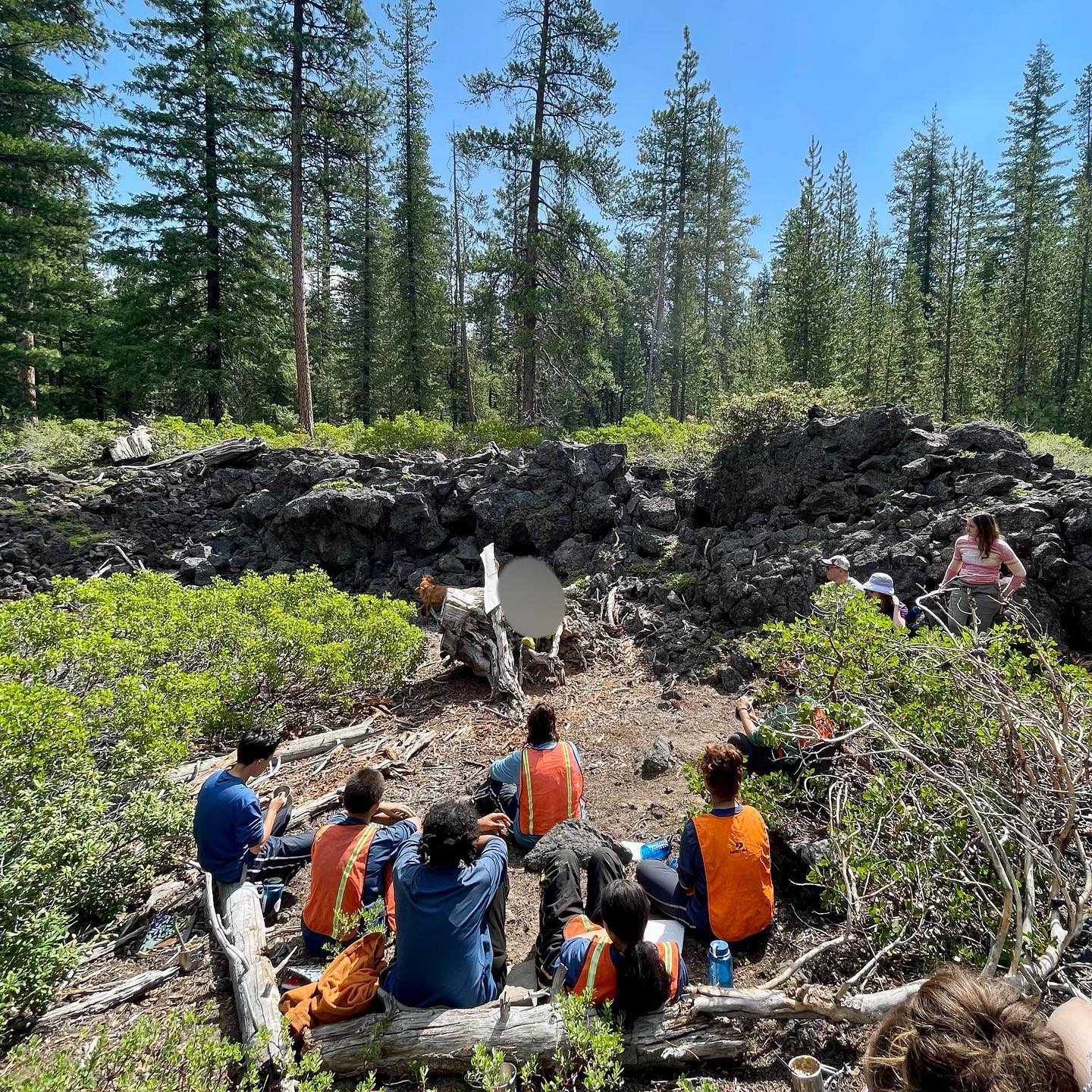Wilderness therapy is a form of experiential therapy that takes place in natural outdoor settings, typically in remote and wilderness areas. It is a therapeutic approach that aims to support personal growth, emotional well-being, and behavioral change through immersion in nature and outdoor activities.
Wilderness therapy programs typically involve a combination of adventure activities, such as hiking, camping, rock climbing, canoeing, and team-building exercises. These activities are facilitated by trained therapists or wilderness guides who create a structured and supportive environment for participants.
The wilderness environment is believed to offer unique benefits for therapy, including increased self-awareness, improved problem-solving skills, enhanced self-confidence, and a sense of connection with nature. Participants are encouraged to step out of their comfort zones, confront challenges, and develop resilience.
Wilderness therapy programs are often used as interventions for individuals facing various mental health issues, including substance abuse, depression, anxiety, behavioral problems, and emotional difficulties. The length of the programs can vary, ranging from a few weeks to several months.
History Of Wilderness Therapy Programs
The origins of wilderness therapy can be traced back to various influences and movements throughout history. Here is a brief overview of the history of wilderness therapy programs:
- Outward Bound: The concept of wilderness therapy can be linked to the establishment of Outward Bound in the mid-20th century. Outward Bound, founded in 1941 by Kurt Hahn and Lawrence Holt, aimed to provide experiential learning and personal development through challenging outdoor activities. The program emphasized teamwork, self-reliance, and character building.
- Therapeutic Camping: In the 1960s and 1970s, the concept of therapeutic camping emerged. These programs were developed as alternatives to traditional mental health institutions and aimed to provide therapeutic experiences in a natural setting. They focused on building self-esteem, improving interpersonal skills, and fostering personal growth through outdoor activities.
- Wilderness Education Association (WEA): Founded in 1977, WEA played a significant role in the development and professionalization of wilderness therapy. WEA provided training, certification, and standardized curriculum for outdoor educators and wilderness therapy practitioners. It contributed to the growth and recognition of wilderness therapy as a distinct field.
- Influence of Native American and Indigenous Practices: Wilderness therapy programs have also been influenced by the practices and philosophies of Native American and Indigenous cultures. These cultures have long recognized the healing power of nature and its connection to overall well-being. Some wilderness therapy programs incorporate elements of Indigenous teachings and practices, emphasizing the importance of environmental stewardship and cultural respect.
- Research and Evolution: Over time, research and evaluation have contributed to the evolution and development of wilderness therapy programs. Studies have examined the effectiveness of these programs in treating specific issues, such as substance abuse, behavioral problems, and mental health disorders. The findings have helped shape the field and guide best practices.
Today, wilderness therapy programs continue to evolve and adapt to meet the needs of individuals seeking therapeutic interventions. They are offered by a range of organizations, including private therapeutic wilderness programs, educational institutions, and treatment centers. The focus remains on utilizing the transformative power of nature and outdoor experiences to facilitate personal growth, self-reflection, and positive change.
Benefits of Wilderness Therapy Programs
Wilderness therapy programs offer a range of potential benefits for participants. Here are some of the commonly reported advantages:
- Therapeutic Environment: The natural wilderness setting provides a unique and therapeutic environment for healing and personal growth. Being immersed in nature can reduce stress, improve mood, and promote a sense of calm and relaxation. The absence of everyday distractions allows participants to focus on their inner thoughts and emotions.
- Personal Development: Wilderness therapy programs often emphasize personal development and self-discovery. Participants are challenged physically, emotionally, and mentally, which can lead to increased self-awareness, self-confidence, and a greater sense of personal resilience. Through facing and overcoming outdoor challenges, individuals can develop problem-solving skills, decision-making abilities, and improved self-esteem.
- Connection with Nature: Spending time in nature has been linked to various positive outcomes, including improved mental health and well-being. Wilderness therapy programs provide an opportunity for participants to reconnect with nature, fostering a sense of awe, appreciation, and environmental stewardship. This connection with nature can enhance overall well-being and provide a source of inspiration and healing.
- Social Skills and Interpersonal Growth: Wilderness therapy programs often involve group activities and teamwork, fostering the development of social skills and interpersonal growth. Participants learn to communicate effectively, collaborate, and build relationships with others in a supportive and structured environment. This can lead to improved social functioning, empathy, and a sense of belonging.
- Coping Skills and Emotional Regulation: Wilderness therapy programs can help individuals develop and practice healthy coping strategies and emotional regulation techniques. Being in nature and engaging in outdoor activities can provide a space for individuals to process and express their emotions in a safe and supportive environment. Participants learn to manage stress, regulate emotions, and develop adaptive coping skills that can be applied in their everyday lives.
- Alternative to Traditional Therapy Settings: For some individuals, traditional therapy settings may not be as effective or appealing. Wilderness therapy offers an alternative approach that allows individuals to engage in therapy while participating in outdoor activities. This can be particularly beneficial for those who thrive in nature, find it easier to open up in non-traditional environments, or prefer a more experiential and hands-on approach to therapy.
It’s important to note that the specific benefits experienced may vary depending on individual circumstances, the program structure, and the guidance of qualified professionals. Each person’s journey through wilderness therapy is unique, and outcomes can differ.
Set Backs of Wilderness Therapy Programs
Despite the many benefits of the program, reports of trails wilderness program deaths have been deeply concerning to many. The number of allegations and deaths at wilderness therapy camps is a clear sign that regulators should take a closer look at these institutions to evaluate the safety and well-being of individuals in wilderness therapy programs.
Increased scrutiny and regulation can help ensure the safety and well-being of participants in these programs. Reported wilderness therapy deaths include:
- Kristen Chase (1990): Kristen Chase’s death from heatstroke highlighted the importance of appropriate safety measures and protocols in wilderness programs, particularly in extreme weather conditions. The incident prompted a closer examination of program practices and the need for adequate staff training in recognizing and responding to medical emergencies.
- William Edward Lee (2000): William Edward Lee’s death due to a head injury after being restrained by staff underscores the significance of proper training and supervision in managing behavioral issues within wilderness therapy programs. Restraint techniques and procedures need to prioritize the safety and well-being of participants.
- Ian August (2002): Ian August’s death from hyperthermia emphasizes the need for careful monitoring of participants during outdoor activities, especially in hot weather conditions. Proper hydration, rest, and medical attention are essential elements in preventing heat-related illnesses and fatalities.
- Charles Moody (2002): The asphyxiation death of Charles Moody highlights the importance of using appropriate and safe restraint techniques, if necessary, within wilderness therapy programs. It underscores the need for staff training in de-escalation strategies and non-violent crisis intervention.
- Anthony Haynes (2005): Anthony Haynes’ death during punishment at a wilderness boot camp brings attention to the potential risks associated with punitive measures in such programs. Effective behavior management strategies should prioritize safety and avoid actions that could lead to harm or endanger participants.
- Caleb Jensen (2007): Caleb Jensen’s tragic death at a wilderness camp raises concerns about the quality of supervision and care provided within these programs. It underscores the need for staff training, appropriate ratios, and continuous monitoring of participants to ensure their safety and well-being.
- Daniel Huerta (2011): Daniel Huerta’s death during transportation by a staff member highlights the importance of safe and responsible transportation practices in wilderness therapy programs. Adequate training, adherence to safety protocols, and appropriate driver qualifications are crucial to prevent such incidents.
- Lane Lesko (2016): Lane Lesko’s death during an escape attempt at a hybrid wilderness-residential treatment center underscores the importance of comprehensive risk assessment and safety protocols within these programs. It raises questions about the adequacy of security measures and supervision during such incidents.
These incidents and others like them have led to increased attention, calls for transparency, and the need for improved safety standards in wilderness therapy programs. It is essential for parents, legislators, and the media to closely scrutinize and ensure the welfare of individuals participating in these programs through appropriate regulations, oversight, and accountability measures.
How to Find Top-Rated Wilderness Therapy Programs
When searching for top-rated wilderness therapy programs, consider the following factors:
- Accreditation and Licensing: Look for programs that are accredited by recognized accrediting bodies and hold appropriate licenses. This ensures that they meet certain standards and adhere to industry best practices.
- Professional Staff: Evaluate the qualifications and experience of the program’s staff. Wilderness therapy programs should have trained and licensed therapists, outdoor educators, and wilderness guides who have expertise in their respective fields.
- Safety Protocols: Inquire about the program’s safety policies and procedures. Ensure they have robust risk management protocols in place, including staff training, emergency response plans, and appropriate participant-to-staff ratios.
- Individualized Treatment Approach: Seek programs that offer personalized treatment plans tailored to the specific needs of each participant. A comprehensive assessment and individualized therapeutic interventions can lead to more effective outcomes.
- Program Structure and Activities: Consider the program’s structure and the types of activities offered. Look for programs that offer a balance between therapeutic interventions, outdoor experiences, and adventure activities that align with the participant’s goals and preferences.
- Aftercare and Transition: Inquire about the program’s aftercare and transition support. A good program will provide guidance and resources for participants and their families as they transition back to their everyday lives.
- Reviews and Testimonials: Read reviews and testimonials from former participants and their families, if available. Their experiences can provide insights into the program’s strengths, weaknesses, and overall effectiveness.
- Consult Professionals: Consult with mental health professionals, therapists, or educational consultants who have expertise in wilderness therapy. They can provide guidance and recommendations based on their knowledge and experience.
It’s crucial to conduct thorough research, visit program websites, speak with program representatives, and ask specific questions to determine the best wilderness therapy program for your needs.





